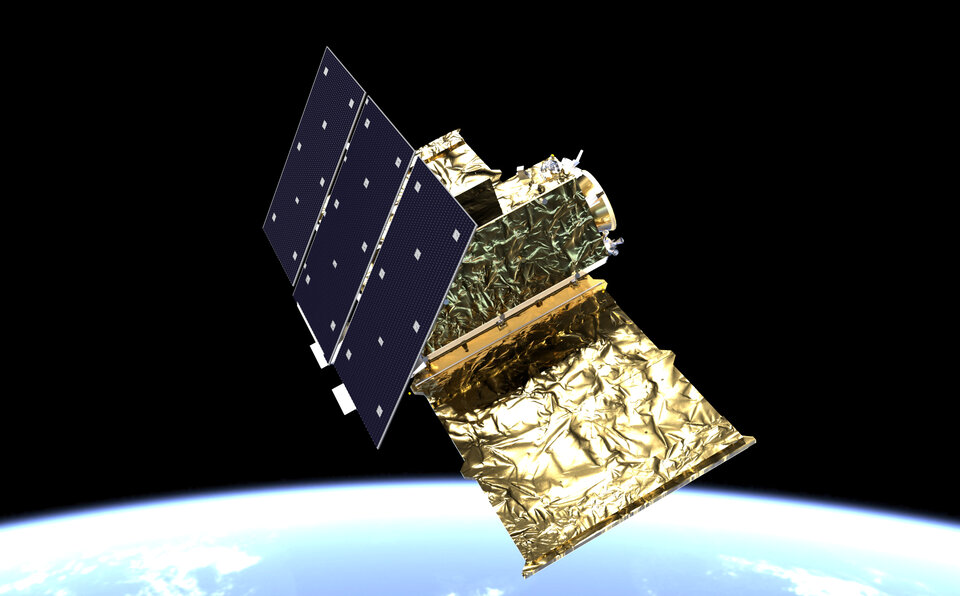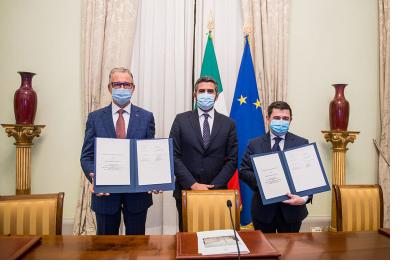The European Commission plans to rapidly expand its environmental monitoring programme Copernicus. For this purpose, the European Space Agency (ESA) recently pledged 2.55 billion Euros towards contracts to advance the production of six new Copernicus satellite missions. The final of the six contracts was signed last Thursday between ESA and Thales Alenia Space for a mission that will provide new and important information to climate research and disaster management.
The high-priority Copernicus Radar Observation System for Europe in L-band (ROSE-L) mission is planned to launch in 2028 for a period of 7.5 years. The ROSE-L mission will orbit Earth every few days at an altitude of 690km and will carry a L-Band synthetic aperture radar (SAR). With a wavelength of approximately 23cm, an L-Band signal allows for the deeper penetration of a medium and an increased interaction of the radar signal with large objects. As a result, L-Band SAR is commonly used to map forest cover as the radar is able to penetrate beyond the tree canopy and interact with trunks and branches located below. Images taken with L-Band SAR satellites therefore oftentimes complement those images of satellites with a smaller wavelength. In the case of ROSE-L, the radar capabilities of the mission are complementary to those of the Copernicus Sentinel-1 mission using C-Band SAR with a wavelength of 5cm. The antenna of the SAR instrument on the ROSE-L mission will be the largest planar antenna ever built. At a diameter of 11 metres by 3.6 metres, the antenna will capture data unprecedented in Earth Observation (EO).

The objective of the ROSE-L mission is to advance European policy goals and target gaps in the Copernicus constellation. It will do so by offering refined data for various areas: natural hazards, forest and land cover mapping, maritime tracking and polar surveillance. ROSE-L will greatly boost the ability to detect subtlechanges in the crust of the planet, which will contribute to an earlier awareness of natural hazards. The mission will also provide data on forest coverage to monitor the development of carbon stocks and help the estimate of biomass. Moreover, it will engage in land mapping to observe soil moisture levels in order toimprove water quality and ensure accurate farming and food conservation. ROSE-L will track glaciers and sea ice to facilitate the sustainable growth of the region as illustrated in the European Arctic policy. The mission will also chart global water usage and supply in accordance with the EU Water Framework Directive. In combination, this data obtained by ROSE-L will contribute to a more comprehensive understanding of climate change and a more effective evaluation of natural disasters.
The contract for the ROSE-L mission worth 482 million Euros was secured by Thales Alenia Space in Italy. Appropriately, the Undersecretary of the Italian Prime Minister's Office, Riccardo Fraccaro was present at the signing ceremony alongside ESA's Director General, Jan Wörner. However, Thales Alenia Space will not be the only company working on the development of the ROSE-L mission. The Space and Defence division at Airbus in Germany is tasked with the production of the radar instrument for the ROSE-L mission. In total, the industrial team spans almost 30 companies from over a dozen countries.

